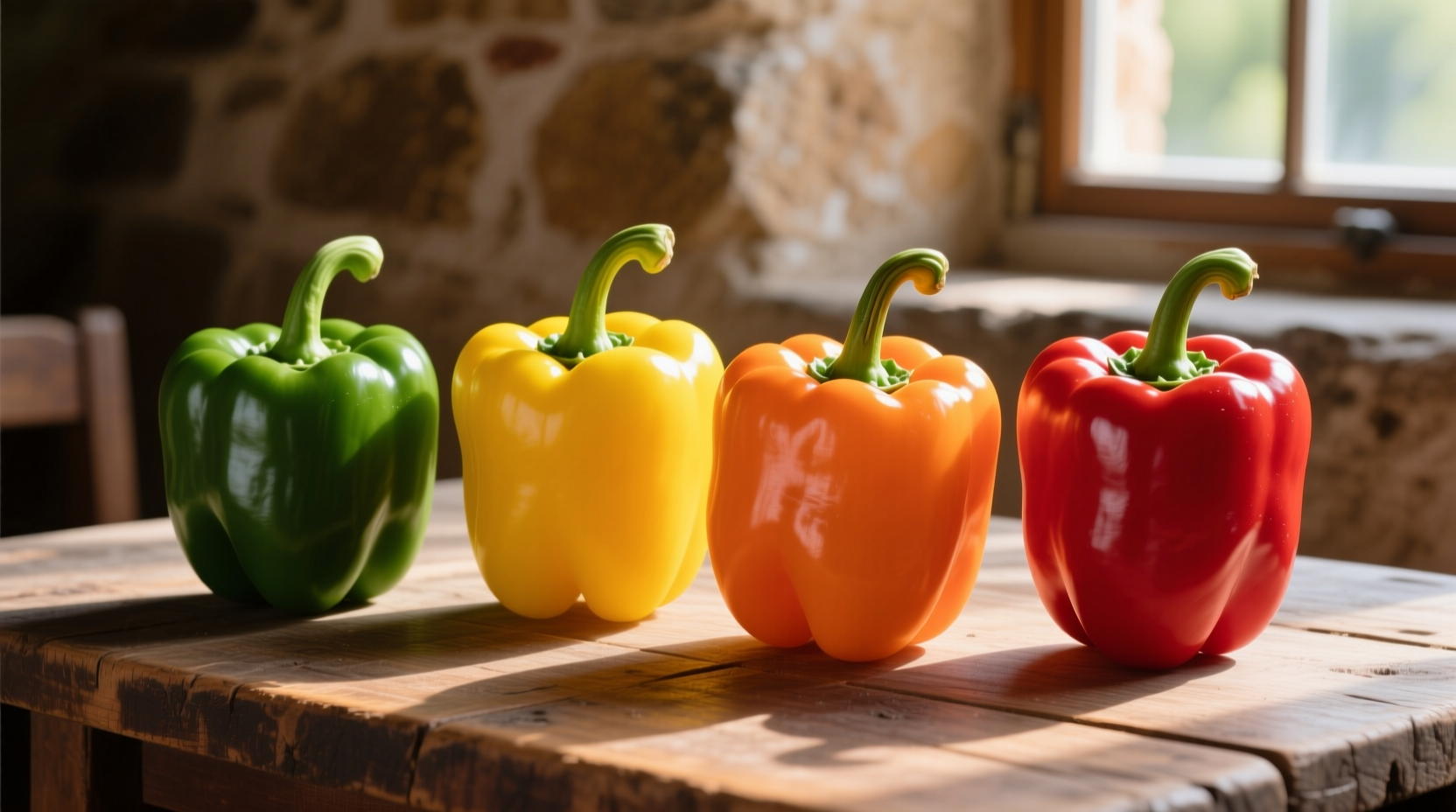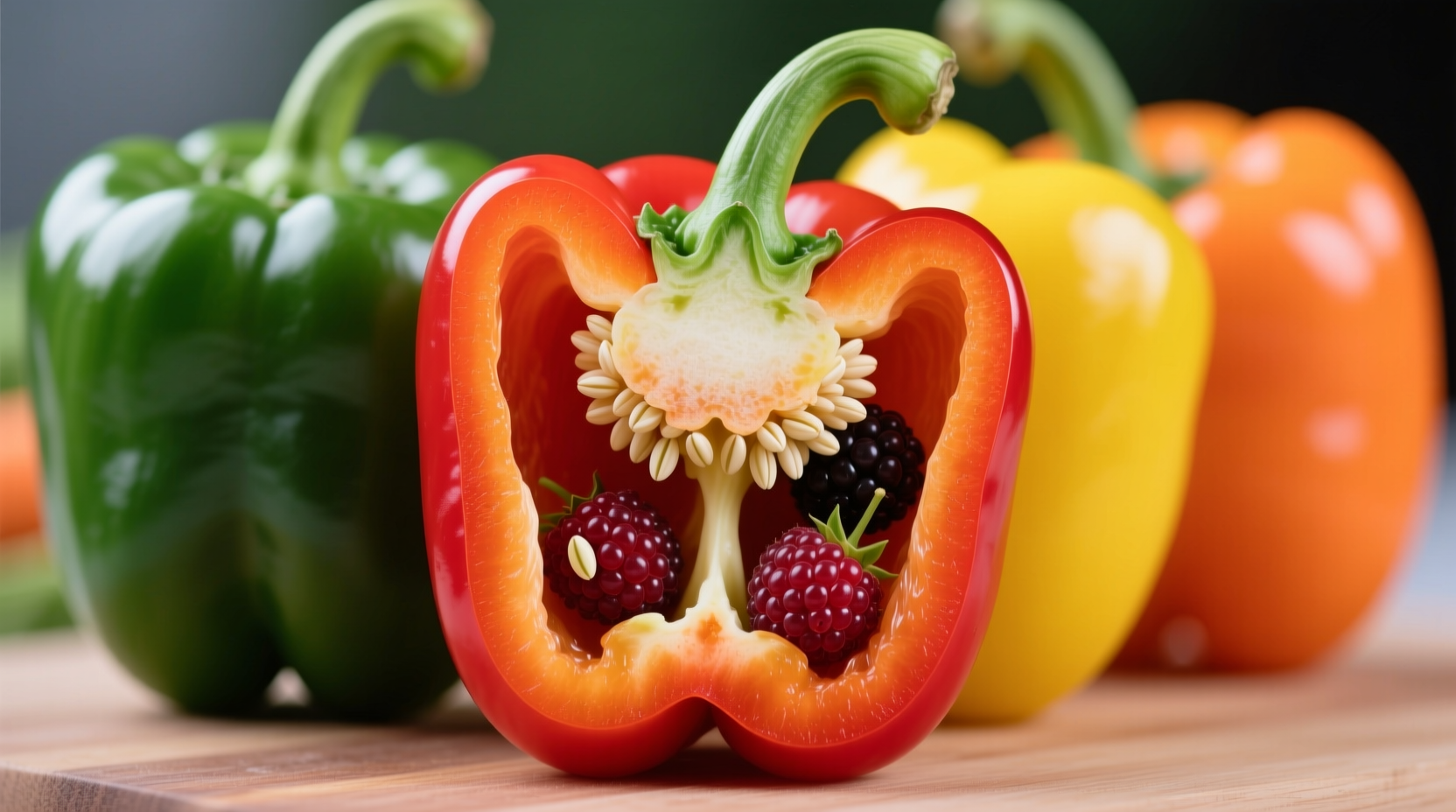Discover why this common kitchen ingredient defies culinary expectations and how understanding its true classification can enhance your cooking knowledge. In this comprehensive guide, you'll learn the scientific basis for bell peppers being fruits, explore the historical reasons behind the confusion, and gain practical insights that will change how you approach recipes and meal planning.
The Botanical Definition That Makes Bell Peppers Fruits
When scientists classify plants, they use strict botanical criteria rather than culinary traditions. According to the USDA Agricultural Research Service, a fruit is defined as "the mature ovary of a flowering plant, usually containing seeds." Bell peppers perfectly fit this definition because they develop from the fertilized flower of the Capsicum annuum plant and house numerous seeds within their fleshy interior.
This botanical classification places bell peppers in the same category as tomatoes, cucumbers, and eggplants—all technically fruits that we commonly treat as vegetables in cooking. The confusion arises because culinary traditions classify foods based on flavor profiles and usage rather than scientific criteria.
| Botanical Classification | Culinary Classification | Examples |
|---|---|---|
| Fruit: Develops from flower ovary, contains seeds | Vegetable: Savory flavor, used in main dishes | Bell peppers, tomatoes, cucumbers |
| Vegetable: Edible plant parts (roots, stems, leaves) | Vegetable: Same as botanical | Carrots, celery, spinach |
| Fruit: Same as definition | Fruit: Sweet flavor, used in desserts | Apples, bananas, berries |
Why Bell Peppers Confuse Chefs and Home Cooks Alike
The disconnect between scientific and culinary classifications dates back to 1893 when the U.S. Supreme Court ruled in Nix v. Hedden that tomatoes should be classified as vegetables for tariff purposes. This legal decision reflected how Americans used tomatoes in cooking rather than their botanical reality. The same principle applies to bell peppers—they're prepared and consumed like vegetables despite their botanical classification.
Professional chefs like those at the International Culinary Center recognize this distinction but continue using culinary classifications because they're more practical for recipe development. When developing menus, the flavor profile and cooking application matter more than botanical accuracy. Bell peppers' low sugar content and savory applications naturally place them in the vegetable category for culinary purposes.
Pepper Evolution: From Wild Plants to Kitchen Staple
Bell peppers have an interesting evolutionary journey that explains their fruit characteristics. Originally cultivated in Central and South America over 6,000 years ago, peppers were selected for their seed-bearing properties. The timeline below shows key developments:
- 6000 BCE: Wild pepper varieties first domesticated in Mexico and Peru
- 1493: Christopher Columbus brings peppers to Europe, where selective breeding begins
- 1920s: First sweet bell pepper varieties developed in Hungary
- 1946: Red bell peppers introduced to American markets
- Present: Over 50 varieties of bell peppers cultivated worldwide
This selective breeding process enhanced the fruit characteristics that make bell peppers valuable both nutritionally and culinarily. Unlike their spicy relatives, bell peppers were specifically bred to minimize capsaicin (the compound that creates heat), resulting in the sweet, fleshy fruits we enjoy today.

Practical Implications for Your Kitchen
Understanding that bell peppers are fruits isn't just academic—it has real implications for how you cook and store them. Because they're botanically fruits, bell peppers share certain characteristics with other fruits that affect their behavior in the kitchen:
- Ripening process: Like tomatoes, bell peppers continue ripening after harvest. Green peppers will turn yellow, orange, or red if left at room temperature.
- Storage considerations: As fruits, they're best stored in the refrigerator's crisper drawer, away from ethylene-producing fruits like apples that can accelerate ripening.
- Cooking chemistry: Their fruit nature means bell peppers contain natural sugars that caramelize beautifully when roasted, creating complex flavor profiles.
Professional chefs leverage this knowledge to maximize flavor. When developing recipes, they consider bell peppers' fruit characteristics to determine optimal cooking times and temperature. For instance, roasting bell peppers at high heat (400°F/200°C) enhances their natural sweetness through the Maillard reaction—a chemical process more commonly associated with fruits than vegetables.
When Classification Actually Matters
While the fruit vs. vegetable debate might seem academic, there are specific contexts where bell peppers' botanical classification becomes practically important:
- Gardening: Understanding that bell peppers are fruits helps gardeners provide proper care, as fruiting plants have different nutrient requirements than vegetable plants.
- Nutrition: Bell peppers' fruit classification correlates with their high vitamin C content—red bell peppers contain three times more vitamin C than oranges by weight.
- Food safety: Like other fruits, bell peppers are susceptible to certain pathogens that affect fruiting plants differently than root or leaf vegetables.
For home gardeners, recognizing bell peppers as fruits explains why they require similar growing conditions to tomatoes and eggplants. They need warm temperatures, consistent moisture, and nutrient-rich soil to produce their characteristic fleshy fruits. This knowledge helps prevent common cultivation mistakes that occur when treating them like traditional vegetables.
Clearing Up Common Misconceptions
Several myths persist about bell peppers and their classification. Let's address the most common ones with scientific clarity:
- Myth: "Bell peppers aren't fruits because they don't taste sweet."
Fact: Sweetness isn't the determining factor for botanical fruit classification. Many fruits (like tomatoes and cucumbers) have low sugar content. - Myth: "Only plants with high sugar content are fruits."
Fact: The sugar content determines whether something is a culinary fruit, not a botanical one. Botanical classification depends solely on plant structure and development. - Myth: "Bell peppers can't be fruits because they're not dessert ingredients."
Fact: Culinary usage doesn't change botanical reality. Many fruits serve savory purposes—avocados in guacamole, olives in salads, and yes, bell peppers in stir-fries.
These distinctions matter because they help us understand the broader context of food science. When you recognize bell peppers as fruits, you gain insights into their nutritional profile, optimal growing conditions, and culinary applications that might otherwise remain hidden.











 浙公网安备
33010002000092号
浙公网安备
33010002000092号 浙B2-20120091-4
浙B2-20120091-4